2017-10-26 - Nº 130
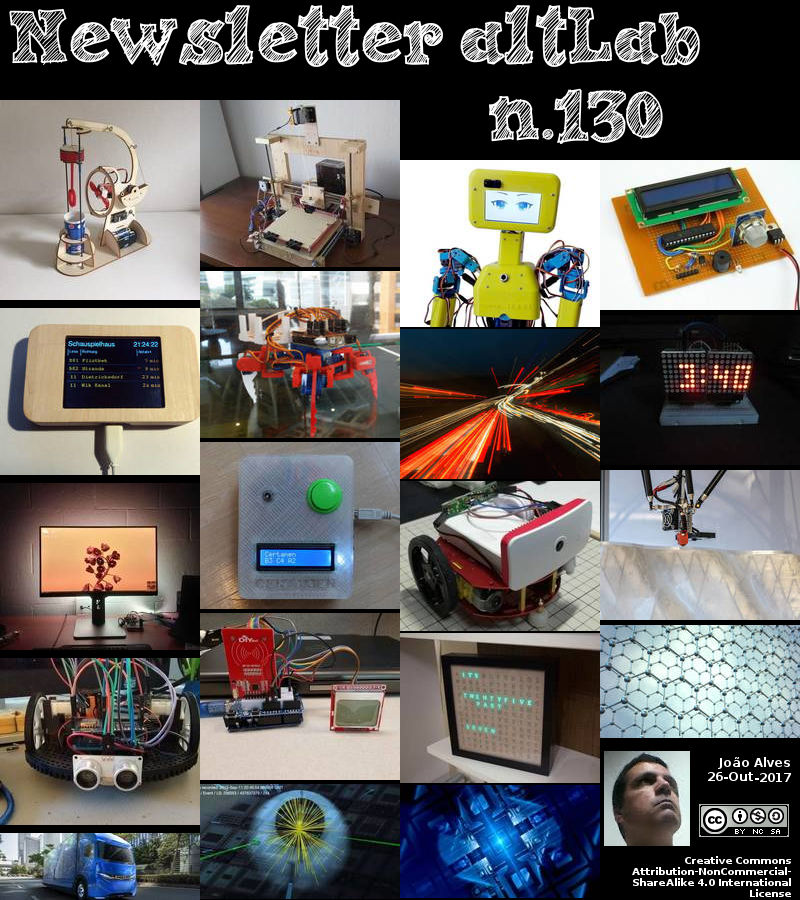
Editorial
Esta é a Newsletter Nº 130 que se apresenta com o mesmo formato que as anteriores. Se gostar da Newsletter partilhe-a!
Todas as Newsletters encontram-se indexadas no link.
Esta Newsletter tem os seguintes tópicos:
Faz hoje anos que nascia, em 1849, Ferdinand Georg Frobenius. Este matemático alemão nascido em Berlim ficou conhecido pelas suas contribuições para a teoria das funções elípticas, equações diferenciais, teoria dos números e a teoria grupal. Ele é conhecido pelas famosas identidades determinantes, conhecidas como fórmulas Frobenius-Stickelberger, que governam as funções elípticas e para o desenvolvimento da teoria das formas bi-quadráticas.
Faz também hoje anos que nasciam, em 1877, Gaetano Crocco e Max Mason. O primeiro foi um pioneiro italiano da aeronáutica. Foi ele que reconheceu que para que um helicóptero funcionasse correctamente no voo para a frente era necessário uma maneira de mudar o passo cíclico nas lâminas. Ele projectou uma série de aeronaves no início do século 20 e passou para projectar motores de foguete na década de 1920. Ele calculou que uma nave espacial poderia viajar de Terra para Marte, realizar um passagem de reconhecimento em Marte (sem órbita) e retornar à Terra em um tempo total de cerca de um ano. Max era um físico matemático norte-americano que durante a Primeira Guerra Mundial, inventou vários dispositivos para detecção de submarinos - várias gerações dos sensores passivos do submarino "M" da Marinha. Este aparelho focava o som para determinar a sua origem. Para determinar a direcção a partir da qual o som veio, o operador precisava apenas procurar a saída máxima em seus fones de ouvido rodando um mostrador. O dispositivo final tinha um alcance de 3 milhas. Mason tinha também um interesse especial do qual resultaram inúmeras contribuições na matemática (equações diferenciais, cálculo de variações), física (teoria electromagnética), invenção (compensadores acústicos, dispositivos de detecção de submarinos) e administração de universidades e fundações.
Por fim, faz anos hoje que nascia, em 1911, Shiing-Shen Chern. Este matemático cino-americano ficou conhecido pelas suas contribuições que foram fundamentais para geometria diferencial e topologia. Ele foi amplamente considerado como líder em geometria e um dos maiores matemáticos do século XX.
Nesta semana que passou ficámos a saber que, de acordo com físicos do CERN, o universo não deveria existir!. Um dos grandes mistérios da física moderna é porque é que a antimatéria não destruiu o universo no início dos tempos. Para explicar isso, os físicos supõem que deve haver alguma diferença entre matéria e antimatéria - além da carga eléctrica. Qualquer que seja a diferença, não está aparentemente no seu magnetismo. Os físicos do CERN na Suíça fizeram a medida mais precisa do momento magnético de um anti-protão - um número que mede como uma partícula reage à força magnética - e achou que era exactamente o mesmo que o protão, mas com o sinal oposto. Também esta semana investigadores criaram o CRISPR para editar letras de RNA simples em células humanas. O novo sistema 'REPAIR' edita RNA, em vez de ADN; tem potencial para tratar doenças sem afetar permanentemente o genoma. O Instituto Broad e os cientistas do MIT que aproveitaram o CRISPR para a edição de genomas de mamíferos criaram um novo sistema molecular para a edição eficiente de RNA em células humanas. A edição de RNA, que pode alterar produtos de genes sem fazer alterações no genoma, tem um potencial profundo como ferramenta tanto para pesquisa quanto para tratamento de doenças. Por fim, a AMD apresenta novos processadores móveis Ryzen, o processador mais rápido do mundo para notebooks ultra-finos. Depois do que se viu no Desktop, também nos equipamentos portáteis a AMD está a colocar-se em posição de concorrer a serio com a Intel. O processador móvel AMD Ryzen ™, anteriormente designado como o "Raven Ridge" APU móvel tem um consumo de 15-watt TDP e apresenta duas configurações de 4 Cores com 8 Threads, velocidades máximas entre 3.6 e 3.8 Ghz e 6 MB de L2/L3 Cache. Trazem também uma GPU Radeon Vega que pode trabalhar até 1.1 ou 1.3 Ghz e 8 ou 10 Graphics Compute Units.
Na Newsletter desta semana apresentamos diversos projetos de maker. É apresentada também a revista MagPI 62 de Novembro de 2017.
 João Alves ([email protected])
João Alves ([email protected])
O conteúdo da Newsletter encontra-se sob a licença  Creative Commons Attribution-NonCommercial-ShareAlike 4.0 International License.
Creative Commons Attribution-NonCommercial-ShareAlike 4.0 International License.
Novidades da Semana

Universe shouldn’t exist, CERN physicists conclude
"One of the great mysteries of modern physics is why antimatter did not destroy the universe at the beginning of time. To explain it, physicists suppose there must be some difference between matter and antimatter – apart from electric charge. Whatever that difference is, it’s not in their magnetism, it seems. Physicists at CERN in Switzerland have made the most precise measurement ever of the magnetic moment of an anti-proton – a number that measures how a particle reacts to magnetic force – and found it to be exactly the same as that of the proton but with opposite sign. The work is described in Nature. “All of our observations find a complete symmetry between matter and antimatter, which is why the universe should not actually exist,” says Christian Smorra, a physicist at CERN’s Baryon–Antibaryon Symmetry Experiment (BASE) collaboration." [...]

Researchers engineer CRISPR to edit single RNA letters in human cells
"New ‘REPAIR’ system edits RNA, rather than DNA; has potential to treat diseases without permanently affecting the genome The Broad Institute and MIT scientists who first harnessed CRISPR for mammalian genome editing have engineered a new molecular system for efficiently editing RNA in human cells. RNA editing, which can alter gene products without making changes to the genome, has profound potential as a tool for both research and disease treatment. In a paper published today in Science, senior author Feng Zhang and his team describe the new CRISPR-based system, called RNA Editing for Programmable A to I Replacement, or “REPAIR.” The system can change single RNA nucleotides in mammalian cells in a programmable and precise fashion. REPAIR has the ability to reverse disease-causing mutations at the RNA level, as well as other potential therapeutic and basic science applications. “The ability to correct disease-causing mutations is one of the primary goals of genome editing,” said Zhang, a core institute member at the Broad Institute and investigator at the McGovern Institute for Brain Research at MIT. “So far, we’ve gotten very good at inactivating genes, but actually recovering lost protein function is much more challenging." [...]
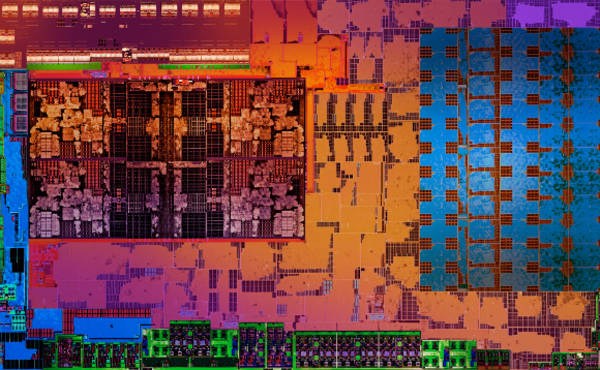
AMD Introduces New Ryzen Mobile Processors, the World’s Fastest Processor for Ultrathin Notebooks
"New Ryzen 7 2700U and Ryzen 5 2500U Mobile Processors with Radeon Vega Graphics Deliver Blazingly Fast Performance, Fluid Graphics Rendering, and Optimal Efficiency in Compelling Form Factors. AMD today announced the introduction of the AMD Ryzen™ mobile processor, previously codenamed the “Raven Ridge” mobile APU, providing leadership performance and a complete entertainment experience with optimal efficiency for premium 2-in-1s, convertibles and ultrathin notebook computers. With a configurable 15-watt TDP, the AMD Ryzen™ 7 2700U and AMD Ryzen™ 5 2500U processors combine the architectures of award-winning “Zen” x86 cores--featuring AMD SenseMI Technology2 processor-level intelligence--with revolutionary Radeon “Vega” graphics in a System-on-Chip design to achieve unprecedented ultrathin notebook performance. The AMD Ryzen 7 2700U is the fastest processor for ultrathin notebooks, with up to 44% more multi-threaded CPU performance3 as well as up to 161% more graphics performance4 than the competition3,4. “We promised to bring innovation and competition back to every segment of the PC market in 2017, and today marks the fulfillment of that promise for consumer notebooks following our successful roll-out across the consumer, commercial and high-end desktop markets earlier this year,” said Jim Anderson, senior vice president and general manager, Computing and Graphics Group, AMD. “Ryzen™ mobile processors offer leadership performance for everyday activities, multi-tasking, and advanced workloads alike, all while enabling amazing battery life." [...]
Outras Notícias

Orionid Meteor Shower
"The Orionid meteor shower is expected to peak before dawn on October 21, with up to 20 meteors visible an hour; however, many meteors may still be seen between October 20-22. In fact, outside of this peak period you may still be able to spot a few Orionids between October 2 through November 7. As with observing any meteor shower, get to a dark spot, get comfortable, bring blankets to stay warm, and let your eyes adjust to the dark sky. A cozy lounge chair makes for a great seat, as does simply lying on your back on a blanket, eyes scanning the whole sky. The Orionids are so named as they seem to originate, or radiate, from near the famous constellation Orion. However, they will appear to streak across the entire sky." [...]

PC-MOS/386 v5.01 final release including cdrom driver sources
"This is the initial release of PC-MOS/386 v5.01; the latest released version. This tree: - includes sources - includes the executables - includes the cdrom driver from Rod Roark (sources) - maybe more - does atm NOT include the borland compiler/tools -- not sure if releasing them here is OK. (will have to find out -- else I will document it all for you) See also..... https://en.wikipedia.org/wiki/PC-MOS/386 In concert with Gary Robertson and Rod Roark it has been decided to place all under GPL v3. This does only apply to the PC-MOS/386/The Software Link inc/CDROM code. Does not apply for helper files that are included and publically available. The C compiler and linker et al can be downloaded from several places. Giving the age of the compiler tools I think it's not a problem to add it." [...]

NXP’s i.MX RT Crossover Processor Sets Highest Microcontroller Real-Time Benchmark Performance Yet
"NXP Semiconductors N.V. (NASDAQ:NXPI) presents the i.MX RT series, a crossover solution that bridges the gap between high performance and integration while minimizing costs. As the need for smarter and more ‘aware’ edge computing grows and becomes critical to the development of the Internet of Things (IoT), edge devices are expected to provide the highest compute performance together with reliable security and assured privacy at the lowest cost possible. These essential capabilities with enablers like graphics and display support and seamless connectivity increase system-level costs and extend time-to-market. NXP tackles this challenge by architecting i.MX RT crossover processors to deliver high performance and functional capabilities of applications processors, but with the ease-of-use and real-time deterministic operation of traditional microcontrollers (MCUs). Ideal applications include audio subsystems, consumer and healthcare, home and building automation, industrial computing, motor control and power conversion. The new crossover processors offer high levels of integration and rich user experiences (graphics, display, and audio) while reducing system-level costs." [...]

“Lighten Up” - Deep Space Communications via Faraway Photons
"A spacecraft destined to explore a unique asteroid will also test new communication hardware that uses lasers instead of radio waves. The Deep Space Optical Communications (DSOC) package aboard NASA’s Psyche mission utilizes photons -- the fundamental particle of visible light -- to transmit more data in a given amount of time. The DSOC goal is to increase spacecraft communications performance and efficiency by 10 to 100 times over conventional means, all without increasing the mission burden in mass, volume, power and/or spectrum. Tapping the advantages offered by laser communications is expected to revolutionize future space endeavors – a major objective of NASA’s Space Technology Mission Directorate (STMD). The DSOC project is developing key technologies that are being integrated into a deep space worthy Flight Laser Transceiver (FLT), high-tech work that will advance this mode of communications to Technology Readiness Level (TRL) 6. Reaching a TRL 6 level equates to having technology that is a fully functional prototype or representational model." [...]
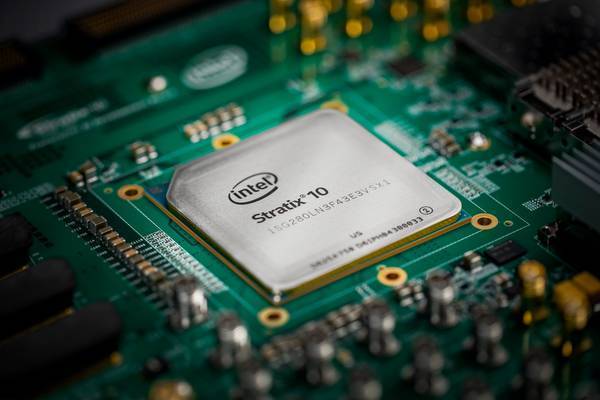
Intel Enables 5G, NFV and Data Centers with High-Performance, High-Density ARM-based Intel Stratix 10 FPGA
"Intel today announced it has begun shipping its Intel® Stratix® 10 SX FPGA – the only high-end FPGA family with an integrated quad-core ARM* Cortex*-A53 processor. With densities greater than 1 million logic elements (MLE), Intel Stratix 10 SX FPGAs provide the flexibility and low latency benefit of integrating an ARM processor with a high-performance, high-density FPGA needed to tackle the design challenges of next-generation, high-performance systems. By integrating the FPGA and the ARM processor, Intel Stratix 10 SX FPGAs provide an ideal solution for 5G wireless communication, software defined radios, secure computing for military applications, network function virtualization (NFV) and data center acceleration. For NFV applications that consolidate and deliver the networking components needed to support a fully virtualized infrastructure, Intel Stratix 10 SX FPGAs can handle the high-speed data path while integrated processors enable the low latency transactions needed to manage flow tables for control plane processing. With hardware acceleration, Intel Stratix 10 SX FPGAs provide a heterogeneous computing environment to create optimized, low latency accelerators. In secure computing applications, integrated processors make it much more difficult to snoop software operations thereby helping keep data secure." [...]

mbed OS 5.6.3 released
"We are pleased to announce the mbed OS 5.6.3 release is now available. This is the latest patch release based on the feature set introduced by Mbed-OS-5.6 Summary This patch release includes new target support for the SILICA_SENSOR_NODE. We have included an update of the uVisor to v0.31.0. This provides a new static debug box, along with some stability enhancements. There is an update of the u-blox ODIN-W2 binaries to 2.2 rc1, bringing a fix for a major issue, where a new instance of the OdinWiFiInterface manipulates the system event queue, in such a way that a previous configuration is lost (5211). It also contains an update for RED compliance." [...]

HPE Is Making Artificial Intelligence Accessible and Practical
"New tools and partnerships bring Deep Learning techniques to customers who’re at various stages of their Artificial Intelligence adoption journey For decades, we've confined Artificial Intelligence (A.I.) to the realm of science fiction. Whether aspirational — like Commander Data of Star Trek: The Next Generation — or dystopian – like Skynet of The Terminator series of films — we've thought of A.I. as just beyond our reach. However, A.I. jumped from science fiction to science years ago." [...]
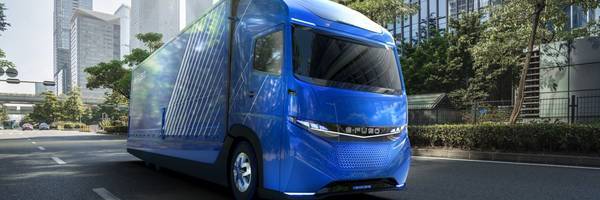
Daimler Trucks launches E-FUSO and all-electric heavy-duty truck Vision One
"Mitsubishi Fuso Truck and Bus Corporation (MFTBC), part of Daimler Trucks, today strengthened the commitment of its FUSO brand towards alternative drivetrains. At the Tokyo Motor Show, MFTBC announced it will electrify its complete range of trucks and buses in upcoming years. At this occasion, MFTBC unveiled E-FUSO as the first OEM to launch a product brand exclusively dedicated to electric mobility of trucks and buses. As further proof of this strategic move, MFTBC celebrated the world-premiere of its all-electric heavy-duty truck concept with a range of up to 350 kilometers. The truck – named E-FUSO Vision One - marks the top end of the electrification path of the company’s portfolio in the upcoming years. This initiative will be backed by access to Daimler know-how in the fields of battery and charging technology, supporting the E-FUSO position as the frontrunner in electric trucking." [...]
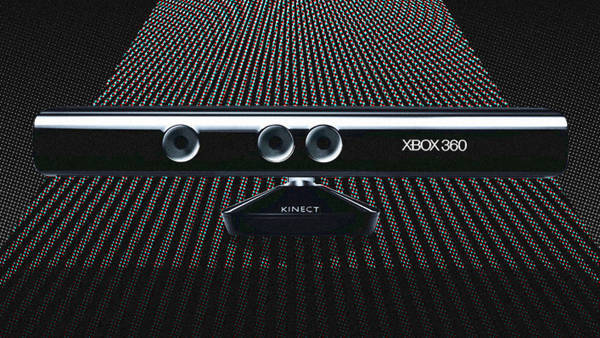
Microsoft Has Stopped Manufacturing The Kinect
"Manufacturing of the Kinect has shut down. Originally created for the Xbox 360, Microsoft’s watershed depth camera and voice recognition microphone sold ~35 million units since its debut in 2010, but Microsoft will no longer produce it when retailers sell off their existing stock. The company will continue to support Kinect for customers on Xbox, but ongoing developer tools remain unclear. Microsoft shared the news with Co.Design in exclusive interviews with Alex Kipman, creator of the Kinect, and Matthew Lapsen, GM of Xbox Devices Marketing. The Kinect had already been slowly de-emphasized by Microsoft, as the Xbox team anchored back around traditional gaming to counter the PS4, rather than take its more experimental approach to entertainment. Yet while the Kinect as a standalone product is off the market, its core sensor lives on." [...]
Ciência e Tecnologia

New technology to dramatically speed up home broadband
"Slow internet speeds and the Internet ‘rush hour’ – the peak time when data speeds drop by up to 30% – could be history with new hardware designed and demonstrated by UCL researchers that provides consistently high-speed broadband connectivity. The new receiver technology enables dedicated data rates at more than 10,000 megabits-per-second (Mb/s) for a truly super-fast, yet low-cost, broadband connection to every UK home. “UK broadband speeds are woefully slow compared to many other countries, but this is not a technical limitation. Although 300 Mb/s may be available to some, average UK speeds are currently 36 Mb/s. By 2025, average speeds over 100 times faster will be required to meet increased demands for bandwidth-hungry applications such as ultra-high definition video, online gaming, and the Internet of Things,” explained lead researcher Dr Sezer Erkılınç (UCL Electronic & Electrical Engineering). “The future growth in the number of mobile devices, coupled with the promise of 5G to enable new services via smart devices, means we are likely to experience bandwidth restrictions; our new optical receiver technology will help combat this problem.” For the study, published today in Nature Communications and funded by the EPSRC UNLOC Programme and Huawei Technologies, scientists from the UCL Optical Networks Group and the University of Cambridge developed a new, simplified receiver to be used in optical access networks: the links connecting internet subscribers to their service providers." [...]
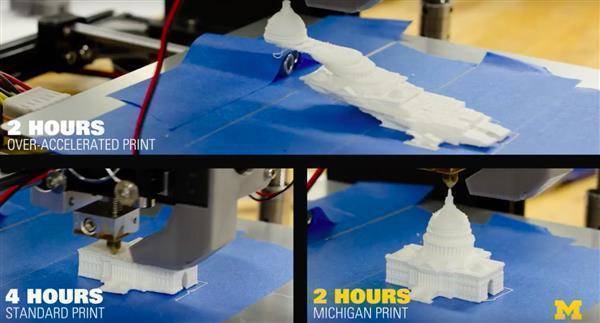
University of Michigan professor doubles 3D printing speeds using vibration-mitigating algorithm
"The Smart and Sustainable Automation Research Laboratory of Chinedum Okwudire, an Associate Professor of Mechanical Engineering at the University of Michigan, has developed a software algorithm called “FBS Vibration Compensation” that effectively doubles 3D printing speeds. Consumer 3D printing has done something that few people would have thought possible a few decades ago: brought small-scale, computer-driven manufacturing to the home and office—and for the price of a new television. But despite the wealth of desktop 3D printing options out there—within the FDM category and beyond—consumer-level 3D printing does have its limitations. Speed is undoubtedly one of those limitations. Although desktop FDM 3D printers can print faster today than they could a few years back, there are still some fundamental characteristics of compact, tabletop 3D printers that put limitations on their speed. Interestingly, it’s not just things like motor speed that keep desktop 3D printers lagging behind their industrial counterparts." [...]

Physics Boosts Artificial Intelligence Methods
"Researchers from Caltech and the University of Southern California (USC) report the first application of quantum computing to a physics problem. By employing quantum-compatible machine learning techniques, they developed a method of extracting a rare Higgs boson signal from copious noise data. Higgs is the particle that was predicted to imbue elementary particles with mass and was discovered at the Large Hadron Collider in 2012. The new quantum machine learning method is found to perform well even with small datasets, unlike the standard counterparts. Despite the central role of physics in quantum computing, until now, no problem of interest for physics researchers has been resolved by quantum computing techniques. In this new work, the researchers successfully extracted meaningful information about Higgs particles by programming a quantum annealer—a type of quantum computer capable of only running optimization tasks—to sort through particle-measurement data littered with errors." [...]

Selective memory
"Scheme would make new high-capacity data caches 33 to 50 percent more efficient. In a traditional computer, a microprocessor is mounted on a “package,” a small circuit board with a grid of electrical leads on its bottom. The package snaps into the computer’s motherboard, and data travels between the processor and the computer’s main memory bank through the leads. As processors’ transistor counts have gone up, the relatively slow connection between the processor and main memory has become the chief impediment to improving computers’ performance. So, in the past few years, chip manufacturers have started putting dynamic random-access memory — or DRAM, the type of memory traditionally used for main memory — right on the chip package. The natural way to use that memory is as a high-capacity cache, a fast, local store of frequently used data." [...]
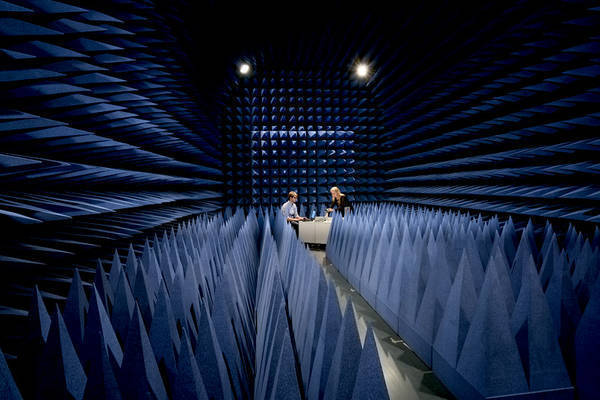
Rendering the invisible visible
"Engineers from Bochum and Duisburg-Essen are developing a technology that is partly only known from films. It sounds like science fiction, the plan devised by researchers involved in the new collaborative research centre named “Marie”: they want to create a flying platform capable of generating a three-dimensional representation of its surroundings. Film enthusiasts might recognise the technology from the movie “Prometheus”, where robotic spheres dart through cave tunnels, scan their surroundings autonomously, and transmit the data in real time to a spacecraft where they are rendered visible in a 3D map. In the real world, the devices shall be based on a combination of radar and laser. The technique could be, for example, deployed in order to find out what firefighters might encounter behind clouds of smoke in a burning building. The system is supposed to not only detect where something is in a room, but also to determine its properties – if it is a burning box or a person lying on the ground, for example." [...]

Quantum Computing: Breaking Through the 49 Qubit Simulation Barrier
"Quantum computing is at the threshold of tackling important problems that cannot be efficiently or practically computed by other, more classical means. Getting past this threshold will require us to build, test and operate reliable quantum computers with 50 or more qubits. Achieving this potential will require major leaps forward in both science and engineering. To help make those leaps, methods are needed to test quantum devices and to compare observed behaviors with desired behaviors so that the design, manufacturing, and operation of these devices can be improved over time. In particular, to test whether the measured outcomes observed on a quantum device are consistent with the quantum circuit being executed, one needs the ability to compute expected quantum amplitudes (complex numbers used to describe the behavior of systems) for those outcomes in order to test arbitrary circuits. Quantum circuits can be thought of as sets of instructions (gates) that are sent to quantum devices to perform computations." [...]

Liquid metal breakthrough ushers new wave of electronics
"RMIT researchers have used liquid metal to create two-dimensional materials no thicker than a few atoms that have never before been seen in nature. The incredible breakthrough will not only revolutionise the way we do chemistry but could be applied to enhance data storage and make faster electronics. The “once-in-a-decade” discovery has been published in Science. The researchers dissolve metals in liquid metal to create very thin oxide layers, which previously did not exist as layered structures and which are easily peeled away. Once extracted, these oxide layers can be used as transistor components in modern electronics. The thinner the oxide layer, the faster the electronics are." [...]
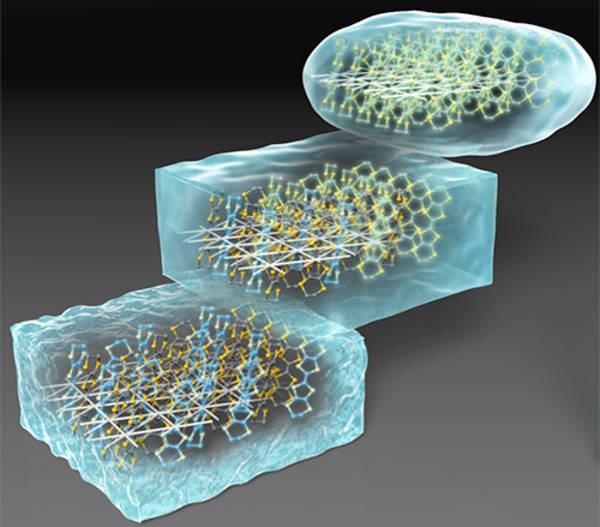
Understanding how electrons turn to glass
"New insights into the behaviour of electrons as liquids transform to glass are deepening our understanding of this transition phase. Researchers at Tohoku University have gained new insight into the electronic processes that guide the transformation of liquids into a solid crystalline or glassy state. The ability of some liquids to transition into glass has been exploited since ancient times. But many fundamental aspects of this transition phase are far from understood. Better understanding could spur the development of new products, such as DVDs or blue ray discs that store data by altering their state of matter from one to another, and of new glass materials. A multi-institutional Japanese team, led by Kenichiro Hashimoto of Tohoku University's Institute for Materials Research, compared the molecular dynamics of glass formation in conventional liquids, such as glucose, to an organic metal material containing 'frustrated' electrons." [...]

Material could bring optical communication onto silicon chips
"Ultrathin films of a semiconductor that emits and detects light can be stacked on top of silicon wafers. The huge increase in computing performance in recent decades has been achieved by squeezing ever more transistors into a tighter space on microchips. However, this downsizing has also meant packing the wiring within microprocessors ever more tightly together, leading to effects such as signal leakage between components, which can slow down communication between different parts of the chip. This delay, known as the “interconnect bottleneck,” is becoming an increasing problem in high-speed computing systems. One way to tackle the interconnect bottleneck is to use light rather than wires to communicate between different parts of a microchip. This is no easy task, however, as silicon, the material used to build chips, does not emit light easily, according to Pablo Jarillo-Herrero, an associate professor of physics at MIT." [...]

Additive manufacturing — a revolution in production engineering
"Additive manufacturing processes are the major topic for the future of production engineering. Applications range from producing machine parts of metal through to 3D printing of concrete. Two international symposia, currently taking place at the Technical University of Munich (TUM), illustrate the bandwidth of high-tech additive manufacturing, and give insight into the multifarious expertise existing at the TUM. Complex metal parts, not milled by a special-purpose machine, but instead structured successively by a laser in next no time from metal powder; casting molds created in a 3D printer from sand and a binding liquid: These are examples of additive manufacturing processes where defined material structures are built layer by layer. Such processes enable shapes that could not be realized before. At the same time, additive manufacturing contributes to a down-sizing of production chains." [...]
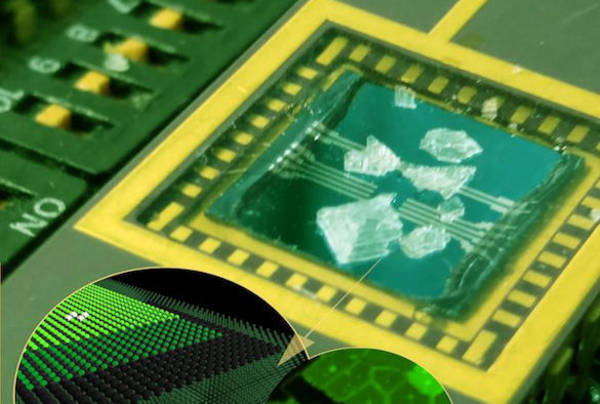
Turning a pinch of salt into an electrical switch
"A team of scientists from the University of Liverpool, University College London and the University of Zaragoza in Spain has discovered a way to induce and control a fundamental electrical switching behaviour on the nano-scale. Their results are reported in the journal Nature Nanotechnology, where the team describe how separating an atomically thin layer of rock salt material – including ordinary table salt – from the surface of metallic copper by including an atomically thin layer of copper nitride in between creates a layer of so-called “electric dipoles”, whose orientation can be switched by applying a large electric field. When most materials are turned upside-down, they look the same at the atomic level and the electrical charges in the atoms cannot have a preference for orienting along a particular direction. In some materials, however, this symmetry is broken, and these charges can line up to form electric dipoles, which can be switched between multiple orientations with an electric field. If they remain in the same orientation after the electric field is removed, the material is commonly referred to as a ferroelectric which is the electrical analogue of a ferromagnet. Because of the intrinsic switching behaviour of ferroelectrics there is a great interest in using nanoscale ferroelectrics for a new form of high density data storage." [...]

Editable Parametric Dense Foliage from 3D Capture
"We present an algorithm to compute parametric models of dense foliage. The guiding principles of our work are automatic reconstruction and compact artist friendly representation. We use Bézier patches to model leaf surface, which we compute from images and point clouds of dense foliage. We present an algorithm to segment individual leaves from colour and depth data. We then reconstruct the Bézier representation from segmented leaf points clouds using non-linear optimisation. Unlike previous work, we do not require laboratory scanned exemplars or user intervention." [...]
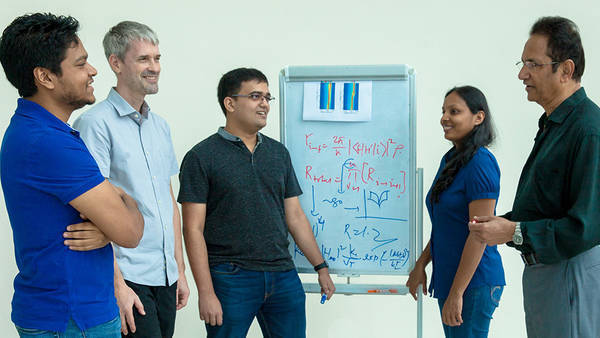
Research team led by NUS scientists breaks new ground in memory technology
"Novel organic thin film significantly outperforms existing flash memory devices An international research team led by scientists from the National University of Singapore (NUS) pioneered the development of a novel thin, organic film that supports a million more times read-write cycles and consumes 1,000 times less power than commercial flash memories. The novel organic film can store and process data for 1 trillion cycles and has the potential to be made even smaller than its current size of 60 square nanometers, with potential to be sub-25 square nanometres. “The novel properties of our invention opens up a new field in the design and development of flexible and lightweight devices. Our work shifts the paradigm on how the industry has traditionally viewed organic electronics, and expands the application of such technologies into new territories,” said Professor T Venky Venkatesan, Director of NUS Nanoscience and Nanotechnology Institute (NUSNNI), the overall coordinator for this groundbreaking project. The invention of this novel memory device was first reported online in the journal Nature Materials on 23 October 2017. Global demand for better electronic memory devices With the emergence of the digital age, data is constantly generated and shared in devices ranging from mobile phones to industrial machines." [...]
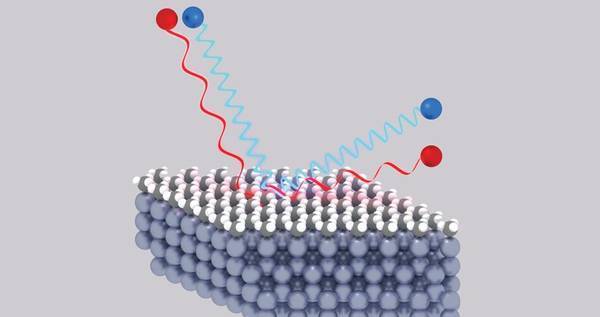
UChicago chemists introduce novel method to separate isotopes
"Separating different versions of elements—isotopes—is an excruciatingly difficult task: They differ by just one or two extra neutrons, an infinitesimal difference in mass. But University of Chicago researchers announced Oct. 23 that they’ve added an entirely new way to do so. In a paper published in Physical Review Letters, a team led by Prof. Steven J. Sibener describes a way to separate isotopes of neon using a beam of gas aimed at a precisely patterned silicon wafer, which reflects the different isotopes at slightly different angles. The method could one day be a less costly and more energy-efficient way to separate isotopes for medicine, electronics and other applications. The few neutrons’ difference in an isotope can make a world of difference to its usefulness. Today, the most common isotopes of interest are uranium for nuclear energy and a constellation of radioisotopes for medical treatments, but enrichment is also increasingly of interest in the electronics world." [...]

Machine learning used to predict earthquakes in a lab setting
"A group of researchers from the UK and the US have used machine learning techniques to successfully predict earthquakes. Although their work was performed in a laboratory setting, the experiment closely mimics real-life conditions, and the results could be used to predict the timing of a real earthquake. The team, from the University of Cambridge, Los Alamos National Laboratory and Boston University, identified a hidden signal leading up to earthquakes and used this ‘fingerprint’ to train a machine learning algorithm to predict future earthquakes. Their results, which could also be applied to avalanches, landslides and more, are reported in the journal Geophysical Review Letters. For geoscientists, predicting the timing and magnitude of an earthquake is a fundamental goal. Generally speaking, pinpointing where an earthquake will occur is fairly straightforward: if an earthquake has struck a particular place before, the chances are it will strike there again." [...]

Resistive memory components the computer industry can’t resist
"Make way for some new memsistors. For years, the computer industry has sought memory technologies with higher endurance, lower cost, and better energy efficiency than commercial flash memories. Now, an international collaboration of scientists may have solved many of those challenges with the discovery of thin, molecular films that can store information. Scientists at Yale, the National University of Singapore (NUS), and the Indian Association for the Cultivation of Science (IACS) have produced new “memsistor” devices that last for 1 trillion cycles — far outstripping the endurance of commercial flash memories for computing. A memsistor is an electrical resistor component with memory; it can regulate the electrical current in a circuit, while remembering the level of charge that goes through it. The discovery is described in a study published Oct. 23 in the online edition of the journal Nature Materials." [...]
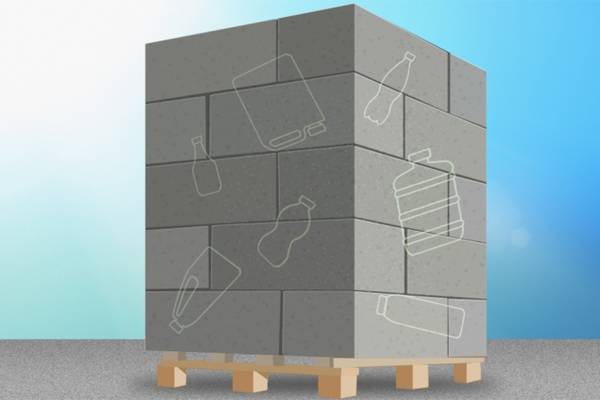
MIT students fortify concrete by adding recycled plastic
"Adding bits of irradiated plastic water bottles could cut cement industry’s carbon emissions. Discarded plastic bottles could one day be used to build stronger, more flexible concrete structures, from sidewalks and street barriers, to buildings and bridges, according to a new study. MIT undergraduate students have found that, by exposing plastic flakes to small, harmless doses of gamma radiation, then pulverizing the flakes into a fine powder, they can mix the plastic with cement paste to produce concrete that is up to 20 percent stronger than conventional concrete. Concrete is, after water, the second most widely used material on the planet. The manufacturing of concrete generates about 4.5 percent of the world’s human-induced carbon dioxide emissions. Replacing even a small portion of concrete with irradiated plastic could thus help reduce the cement industry’s global carbon footprint." [...]
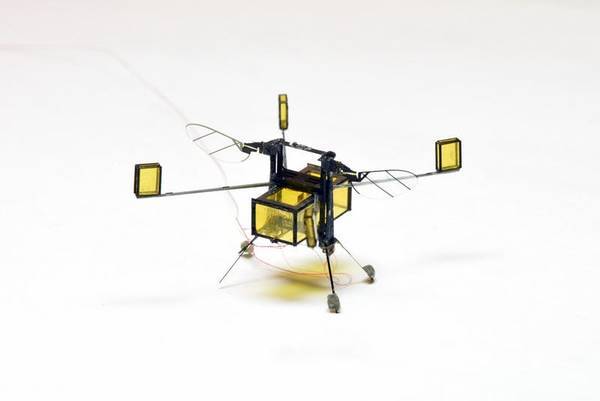
New RoboBee flies, dives, swims, and explodes out the of water
"Hybrid robot could perform search and rescue missions, research studies, environmental monitoring We’ve seen RoboBees that can fly, stick to walls, and dive into water. Now, get ready for a hybrid RoboBee that can fly, dive into water, swim, propel itself back out of water, and safely land. New floating devices allow this multipurpose air-water microrobot to stabilize on the water’s surface before an internal combustion system ignites to propel it back into the air. This latest-generation RoboBee, which is 1,000 times lighter than any previous aerial-to-aquatic robot, could be used for numerous applications, from search-and-rescue operations to environmental monitoring and biological studies. The research is described in Science Robotics. It was led by a team of scientists from the Wyss Institute for Biologically Inspired Engineering at Harvard University and the Harvard John A. Paulson School of Engineering and Applied Sciences (SEAS)." [...]

Scientists detect comets outside our solar system
"Team of professional and citizen scientists identifies tails of comets streaking past a distant star. Scientists from MIT and other institutions, working closely with amateur astronomers, have spotted the dusty tails of six exocomets — comets outside our solar system — orbiting a faint star 800 light years from Earth. These cosmic balls of ice and dust, which were about the size of Halley’s Comet and traveled about 100,000 miles per hour before they ultimately vaporized, are some of the smallest objects yet found outside our own solar system. The discovery marks the first time that an object as small as a comet has been detected using transit photometry, a technique by which astronomers observe a star’s light for telltale dips in intensity. Such dips signal potential transits, or crossings of planets or other objects in front of a star, which momentarily block a small fraction of its light. In the case of this new detection, the researchers were able to pick out the comet’s tail, or trail of gas and dust, which blocked about one-tenth of 1 percent of the star’s light as the comet streaked by." [...]

Taming "Wild" Electrons in Graphene
"Graphene – a one-atom-thick layer of the stuff in pencils – is a better conductor than copper and is very promising for electronic devices, but with one catch: Electrons that move through it can’t be stopped. Until now, that is. Scientists at Rutgers University-New Brunswick have learned how to tame the unruly electrons in graphene, paving the way for the ultra-fast transport of electrons with low loss of energy in novel systems. Their study was published online in Nature Nanotechnology. “This shows we can electrically control the electrons in graphene,” said Eva Y. Andrei, Board of Governors professor in Rutgers’ Department of Physics and Astronomy in the School of Arts and Sciences and the study’s senior author. “In the past, we couldn’t do it." [...]

New fractal-like concentrating solar power receivers are better at absorbing sunlight
"Sandia National Laboratories engineers have developed new fractal-like, concentrating solar power receivers for small- to medium-scale use that are up to 20 percent more effective at absorbing sunlight than current technology. The receivers were designed and studied as part of a Laboratory Directed Research and Development project and are also being applied to Sandia’s work for the Solar Energy Research Institute for India and the United States, or SERIIUS. SERIIUS is a five-year project co-led by the Indian Institute of Science and the National Renewable Energy Laboratory, sponsored by the U.S. Department of Energy and the government of India, that aims to develop and improve cost effective solar technology for both countries by addressing the barriers and challenges of each market. Sandia has led the group’s research in concentrating solar power, focusing on scalable systems. While most concentrating solar power facilities throughout the world are large, Sandia engineer Cliff Ho says India is interested in developing 1 megawatt or smaller facilities that could provide the appropriate amount of power for a small village or community. Improving the efficiency of these smaller receiver designs is a key step toward making that goal a reality." [...]

Digital 3D-fabrication technology for nursing and healthcare
"3D printing technology has important medical applications, such as manufacturing prosthetic parts, implants, and models of human organs. Here, researchers at Keio University in Tokyo, describe the potentially important role of 3D printing in nursing and long-term care for the elderly. Given Japan’s rapidly ageing society, demand for terminal care in hospitals or care facilities will exceed capacity in the near future. Furthermore, there are insufficient visiting nurses to provide in-house care. Therefore, strengthening in-house care is an urgent task for healthcare of the elderly. The introduction of information technology (IT) is an essential strategy from both aspects of work efficiency and providing high quality care." [...]
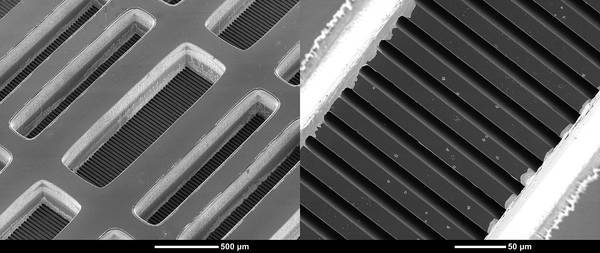
Purdue develops ‘intrachip’ micro-cooling system for high-performance radar, supercomputers
"Researchers have developed a new type of cooling system for high-performance radars and supercomputers that circulates a liquid coolant directly into electronic chips through an intricate series of tiny microchannels. Conventional chip-cooling methods use finned metal plates called heat sinks, which are attached to computer chips to dissipate heat. Such attachment methods, however, do not remove heat efficiently enough for an emerging class of high-performance electronics, said Suresh V. Garimella, who is principal investigator for the project and the Goodson Distinguished Professor of Mechanical Engineering at Purdue University. New advanced cooling technologies will be needed for high-performance electronics that contain three-dimensional stacks of processing chips instead of a single, flat-profile chip. Too much heat hinders the performance of electronic chips or damages the tiny circuitry, especially in small "hot spots." “You can pack only so much computing power into a single chip, so stacking chips on top of each other is one way of increasing performance,” said Justin A. Weibel, a research associate professor in Purdue’s School of Mechanical Engineering, and co-investigator on the project." [...]
Documentação
A documentação é parte essencial do processo de aprendizagem e a Internet além de artigos interessantes de explorar também tem alguma documentação em formato PDF interessante de ler. Todos os links aqui apresentados são para conteúdo disponibilizado livremente pelo editor do livro.
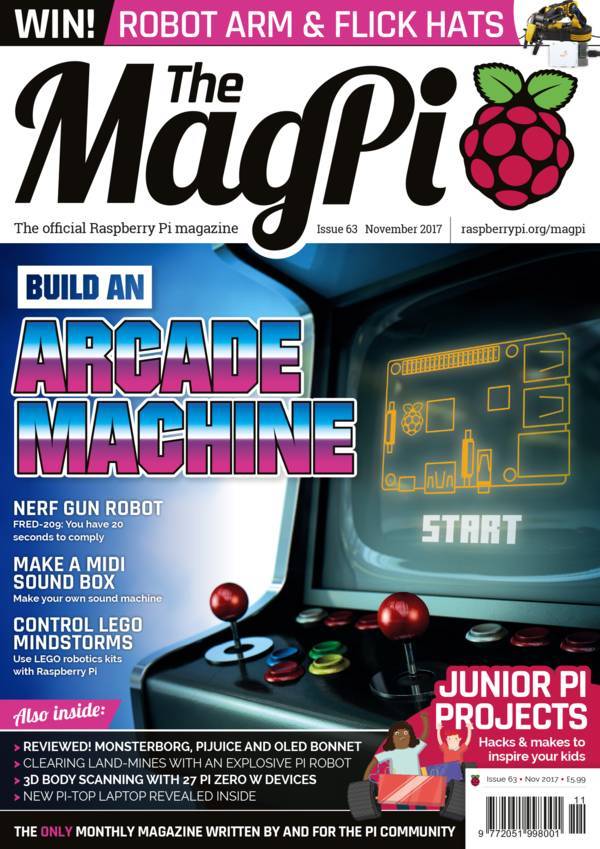
The MagPI 63
"We always wanted an arcade machine. So this issue we decided to find the best build instructions around. In this issue of The MagPi, Bob Clagett from I Like To Make Stuff walks us step-by-step through the process of building a full-sized arcade cabinet. The result is a pixel perfect arcade emulation, stuffed to the max with Raspberry Pi features. Plus all of this inside The MagPi 63 - Junior Pi Projects: Hacks & makes to inspire your kids - NERF Gun Robot: FRED-209: You have 20 seconds to comply with this incredible toy gun toting smart robot - Make a MIDI Sound Box: Build your own sound machine in this month’s Pi Bakery - Control LEGO MindStorms: How to use LEGO robotics kits with Raspberry Pi - MonsterBorg, PiJuice and OLED Bonnet reviewed" [...]
Projetos Maker
Diversos Projetos interessantes.

Setting up a Raspberry Pi as a WiFi access point
"Would you like to use your Pi as a WiFi router? Or maybe have it as a special filtering access point? Setting up a Pi as an access point (AP) is a bit more advanced than using it as a client, but its still only a half hour of typing to configure. If you want to, this tutorial will make it so the Pi broadcasts a WiFi service and then routes internet traffic to an Ethernet cable. Since its all Linux you can go in and update or configure it however you like. I used the following pages as a guide to create this tutorial, please note many of them will not work completely, but check them out if you are interested!" [...]
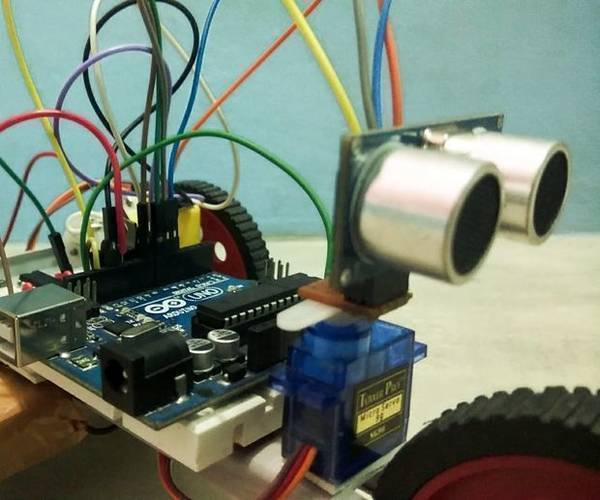
Arduino Based Autonomous Bot Using Ultrasonic Sensor
"Create your own Arduino based Autonomous Bot using Ultrasonic Sensor. This bot can pretty much move around on it's own without colliding with any obstacles. Basically what it does is it detects any kind of obstacles on its way and decides the best path for itself ( well not all kind of obstacles). So without wasting anymore time, lets get started. " [...]

Cryptopuck: Encrypt on the fly
"After finishing a project, I torment myself on what to make next. While riding the bus home one day, an idea struck. How cool would it be if there was a small handheld gadget, able to encrypt USB sticks and SD cards just by plugging them into it. And thus the Cryptopuck was born! Cryptopuck is intended to provide a portable, discrete and hassle-free solution for encrypting USB flash drives, SD cards or other removable media. Whether you are a reporter on a war-front, a photographer at a demonstration that gets cracked down by the police, a developer at the office in need to transfer proprietary files on USB sticks or just a privacy-minded individual, Cryptopuck is for you." [...]

ESP8266 Weather & KVG Infoscreen
"This is a simple Infoscreen for Weatherforecast via darksky.net and bus stop live screens for busses in Kiel via "KVG Echtzeitabfahrten". The infoscreen is based on a NodeMCU (ESP8266) and a ILI9341 LCD Display. " [...]
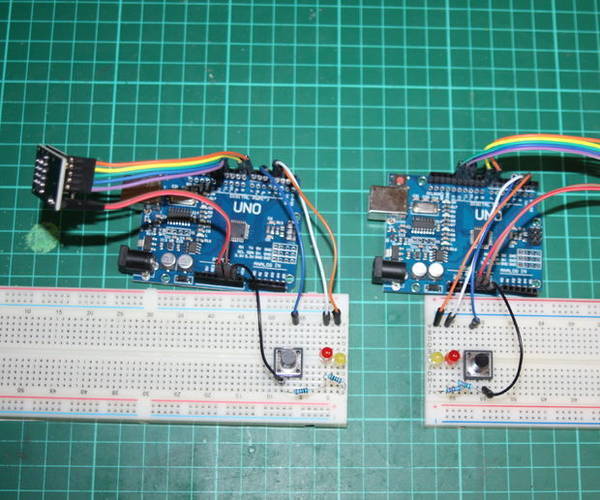
Arduino and NRF24L01
"The reason behind this short learning curve: My son likes to be shut away in his room away from the rest of the noisy family. His mum needs his presence from time to time to help with his autistic brother and meals etc. He asked me about having something in his room that would save his mum going up and down the stairs to get him and I suggested a wi-fi doorbell. Easy solution. He wanted something that was two way. No more details than that, like audio or visual." [...]

DINternet IoT Controller
"IoT DIN Rail Controller, part of my DINternet Network project. Easy to use, flexible and clean DIN Rail installation.Usable as a standalone device or as a slave device in a multi-unit setup, this versatile device brings wireless monitoring and automation to your home network.In recent months and years I have been working on a series of projects that have involved the usual suspects; Raspberry Pi, Arduino, ESP8266 devices etc.The projects I ave been working on have ranged from Aquarium monitors and other home automation/monitor applications all the way to an industrial controller running in a factory to notify staff of PLC activity.Having found many ways to connect these projects to the networks they are used on I decided it was time to develop a universal setup that I can deploy for a all the variety of projects i attempt.My new universal setup contains two, DIN mountable units; the controller and the Hub.The Hub, a Raspberry Pi powered unit, acts as an access point for all the controllers and connects the DINternet Network to the Home or Work network.The controller, an ESP8266-powered unit, is the focus of this project.The controller itself is a simply build; a Wemos D1 (ESP8266 board in the Arduino Uno form factor), a 4 channel arduino relay shield, and a fantastic case (the ArduiBox from hwhardsoft.de) with it's additional OLED display shield.While simple, it is a very versatile unit; the onboard relays can control a variety of devices in a home automation setup or trigger all kinds of equipment, the Wemos pins broken out to the screw terminals can be used to interface with a vast array of inputs and outputs, the case's built in prototyping area can be used to add to your c ircuitry (such as perhaps adding a port expander to add more Analog pins to the Wemos' solitary Analog pin), and the opnboard display can show a variety of sensor information, relay status or even the IP address information for the device.I am currently in the process of migrating my coding for the project to MQTT, so the Controller devices will be able to publish data to the MQTT broker (server running on the Pi) and can also subscribe to other channels, creating a great platform to create all kinds of projects.The Pi itself will act as a MQTT client as well as the broker, meaning it will be able to display all data from all the controllers in an centrally controlled interface. :-)" [...]
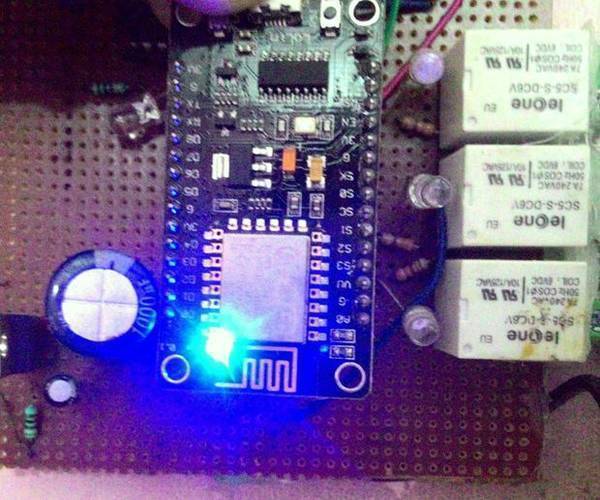
DIY Home Automation Internet/Cloud Controlled (MQTT, IoT, From Anywhere in the World)
"IT'S ACTUALLY INTERNET CONTROLLED NOT LIKE OTHER VAGUE PROJECTS... NOT WIFI ITS OVER INTERNET... IoT the most discussed subject in the world right now!! Cloud servers and services making this possible is the attraction point of today's world... RULING OUT THE DISTANCE BARRIER was and is the aim!! So now control your home or office from anywhere in the world... not from only inside or a range!! Easiest and cheapest solution from the laziest guy!!! ENJOY AND BE LAZY... NOTE: READ THE WHOLE PROJECT FIRST IT WILL TAKE 3-4 MINUTES AND INNOVATE... DON'T HALF READ AND BRICK YOUR DEVICE..." [...]
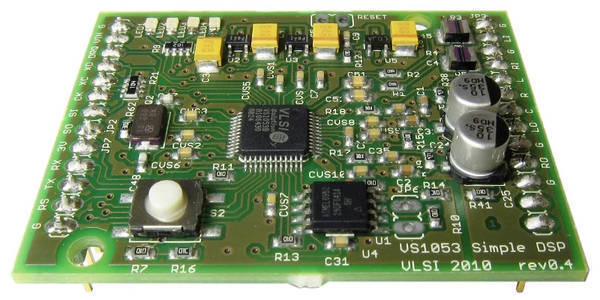
Linear Filtering Based on the Discrete Fourier Transform
"The DFT provides an efficient way to calculate the time-domain convolution of two signals. One of the most important applications of the Discrete Fourier Transform (DFT) is calculating the time-domain convolution of signals. This can be achieved by multiplying the DFT representation of the two signals and then calculating the inverse DFT of the result. You may doubt the efficiency of this method because we are replacing the convolution operation with two DFTs, one multiplication, and an inverse DFT operation. However, since there are efficient methods of calculating the DFT, collectively called the Fast Fourier Transform (FFT), we can gain significant computational saving by using the DFT to perform the time-domain convolution. " [...]
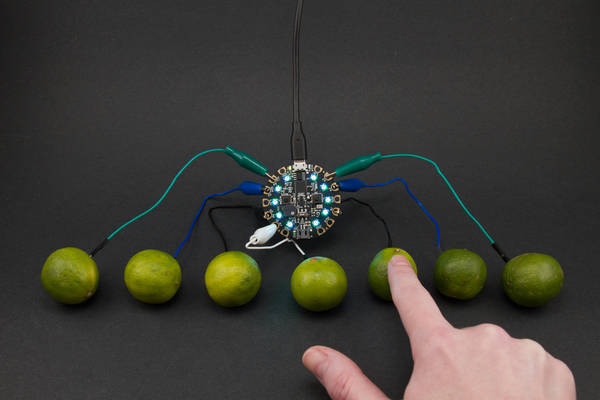
Circuit Playground Express: Piano in the Key of Lime
"This guide will introduce you to the Circuit Playground Express (CPX for short!) and CircuitPython. The Circuit Playground Express is a fantastic little board crammed full of all sorts of sensors, switches and lights. CircuitPython is an open-source derivative of MicroPython, designed specifically for use with Adafruit microcontroller boards like the CPX. This project will teach you how to use CircuitPython to utilise the CPX capacitive touch pads, Neopixels, slide switch, and onboard speaker. Then you'll combine them to create a rainbow-lit tone piano!" [...]

Wemos D1 Mini WIFI Robot (MQTT & UDP)
"This project uses a Wemos D1 mini to control a robot. In it's current state it is little more than a remote controlled "car" on a robot chassis. I am using MQTT from the robot to the display and controller for status updates. The remote uses UDP to send commands to the robot. The remote is also a D1 mini with a OLED screen, and 5 way toggle switch. The display is a ESP8266 with OLED on board (Sometimes called a D-duino, the one I'm using has a 18650 battery connector on the back, and Sits nicely as a desktop display)." [...]
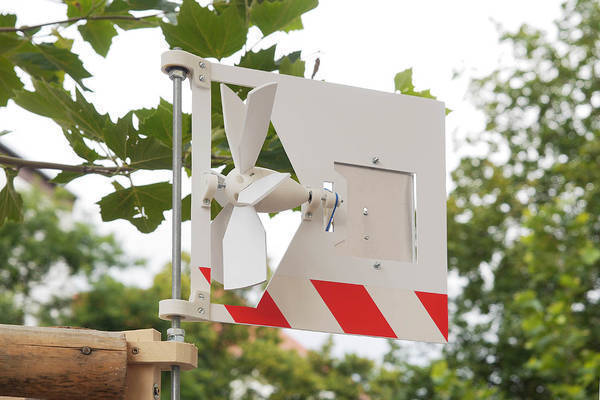
Build a windmill-powered music box
"I've built a little windmill that powers a music box. I set it up in front of my workshop, where it was entertaining the entire neighborhood. People really seemed to like it - quite many took photos of it with their smartphones and spent long time watching it and listening to it. Unfortunately one person liked it a bit too much and stole it during one night. The windmill is built out of a couple of 3D printed parts and some soft plastic sheet material. The construction is relatively easy to replicate, so I decided to make a whole bunch of them, which will be shown as a large public art installation at KIKK Festival 2017." [...]
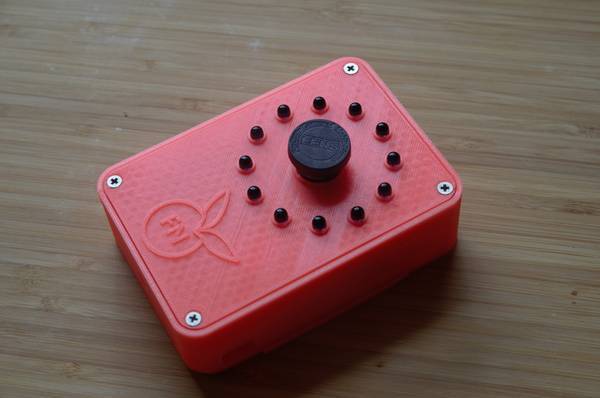
FruitNanny - RaspberryPI based Baby Monitor
"Fruitnanny is a code name for a DIY geek baby monitor. It uses RaspberryPi, a NoIR camera module, infrared lights, temperature and humidity sensors, and a custom Web UI. Chrome and Firefox with native WebRTC are used as clients. Right now it means all major platforms like Windows, Linux, Android, MacOS, and iOS soon are supported. " [...]

Upgrade of TDA2005 Amplifier
"This is not so complicated Amplifier that could be use in household or in the cottage or anywhere where you think off. This is upgraded version of my first instructable "Amplifier TDA2005" . Basically this small amplifier was originally created like low cost solution for my cottage near the Danube, but after connecting it with some old HiFi speakers i decide to keep it and with some improvements use it as good audio systems. Probably the old audiophile will say that something that is based on TDA2005 cannot be consider audio system, but after lots of hours spended listening to this small beast I am pretty pleased with the quality. My personal opinion is that good audio system is the system that you could listen for hours and that the sound is not irritating for you, for example during the nap. " [...]
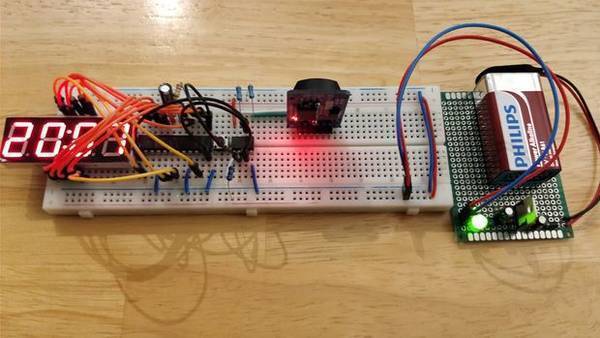
ATtiny85 Clock
"Because I use a lot of tutorials online, I figured I should give something back. So this is my first electronics tutorial, or any for that matter. I should note that I'm not a native English speaker So when I make a mistake or you think something should be a little different, I like to hear it. In this tutorial I will be building an electronics clock, based on the ATtiny85. Which uses a max7219 to drive the 4-digit 7-segment display and an DS3231 as a Real Time Clock. It is part of a bigger project, it I thought I should start here." [...]
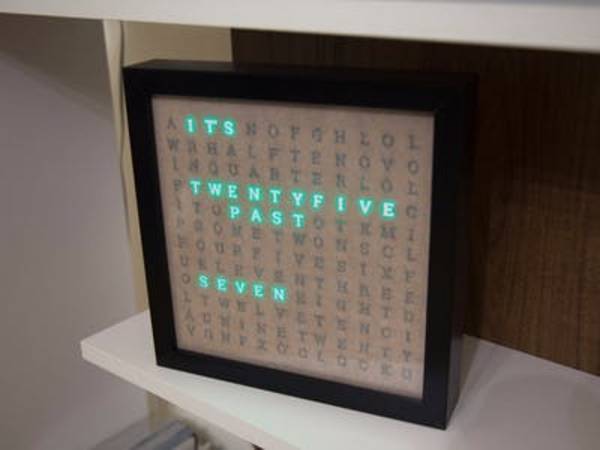
Android Things Word Clock
"An Android Things-powered clock that allows the user to actually READ the time! What about a clock that speaks the user own language? Here it is! The core concept of this clock is that during the day, only the letters needed to create the current time in words will be on, while the others will be off. The first thing to do is to create a layout with all the letters and have it laser-cut of the right size to fit inside the picture frame and with every letter at the same distance between each others as the LEDs in the strip are. Speaking about the LEDs, the project will both work with WS2801 and WS2812B strips." [...]

Replacing an Apple 2e Clone's keyboard controller with an Arduino
"This is about my vintage Apple 2e clone. It's a bit of a turd but I love it. I picked it up in a junk store in the mid 90s for something like $20. When you boot it up, instead of saying APPLE ][, it says, simply, COMPUTER. Upon firing it up for the first time in 20 years I discovered the keyboard was not working, and quickly deduced the keyboard decoder chip was burned out. This is an article about how I reverse engineered the keyboard decoder circuit enough to replace it with an Arduino." [...]
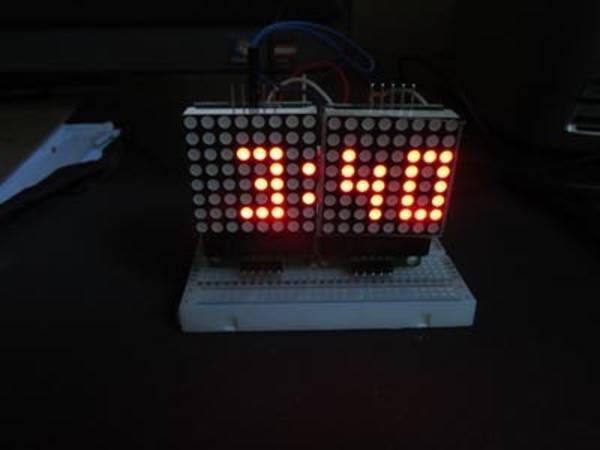
Arduino Cheap minimal parts digital clock
"A digital clock using minimum components. My objective was to build a digital clock using minimum components. This clock display is on two 8 x 8 LED max7219 and uses Arduino for time without rtc. It's cheap and easy, minimal wiring but long code. " [...]
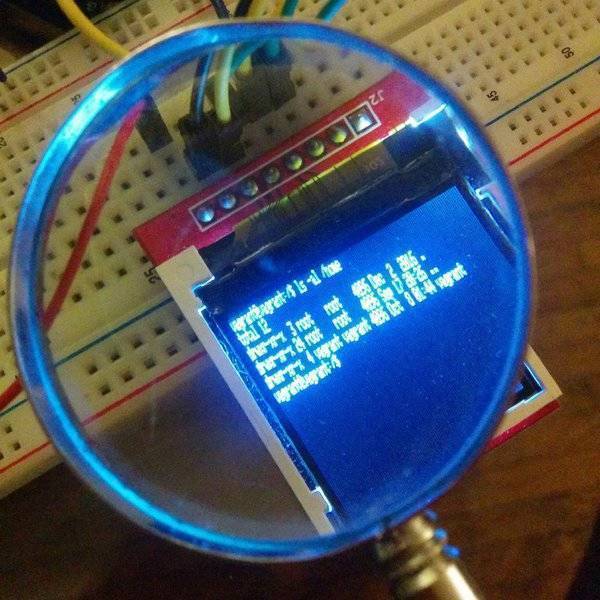
Tiny Wearable 8-bit VT100 Console
"Arduino Uno-powered terminal emulator on a tiny 1"x1" TFT screen To enter command-line tasks on Mac/Linux/Windows we use a text console window. But back in the old days there was no window display at all, and the text console was actually a dedicated box with a CRT screen that would connect to the main computer over the wire - a terminal or TTY.I decided to build one of those using modern parts like the Arduino and make it as tiny as I can: Would be cool to build a wearable wrist device for badass cyberpunk hackers!There are several AVR-based terminal emulator projects, but I found difficulty adapting them to my display, a one-inch-square TFT based on the ILI9163C chipset. So I decided to hack together my own VT100 command parser and renderer, with intention to keep the code tidy, clear and extensible. I am also experimenting with fun techniques like sub-pixel rendering to show more text on screen: currently, the 128 pixel width manages to display up to 64 characters across (2 pixels per character!). " [...]
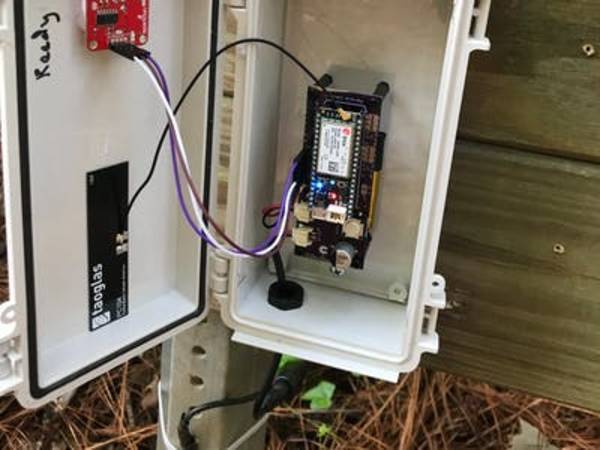
Particle Electron Carrier for Outdoor IoT Applications
"Use this carrier to enhance the survivability, reliability and capabilities of the Particle Electron, a cellular IoT device. I have been building IoT sensors for outdoor use for a few years now. Most of my focus has been on helping local parks better count and report the cars, bikers, joggers and hikers which use their facilities each day. By giving them an accurate and automatic way to measure park utilization, They can save significant labor costs, get a more complete count and facilitate reporting. My hope is that this work will show how important our parks are and help preserve and even expand funding for these vital community resources. Longer term, I also want to collect environmental and health data with these devices and I realized that a general purpose enhancement to the Particle Electron would be useful in all manner of applications that I - or the community - might dream up." [...]
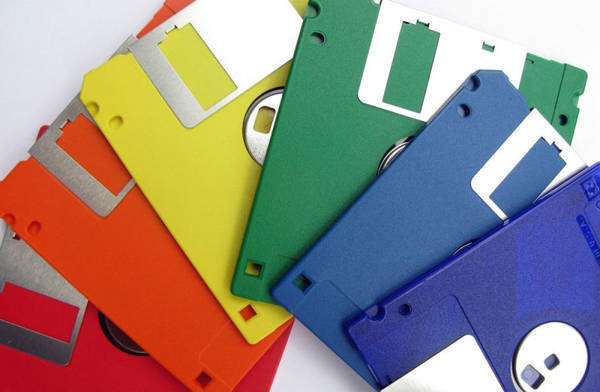
Writing a Bootloader
"This article series explains how to write a tiny 32-bit x86 operating system kernel. We won’t do very much other than print Hello world! to the screen in increasingly complicated ways! We’ll start off in assembly and then build up to writing C++! A presentation of this article series is also available. To follow along you’re going to need the NASM assembler and QEMU to emulate a virtual machine for us." [...]

Soap Bubble Machine
"Automated Soap Bubble Machine controlled by Arduino with lasercut frame Automated Soap Bubble Machine controlled by Arduino with lasercut frame. Easy Arduino fun project and it makes bubbles! This is a simple project to start with Arduino. A servo, a motor, some code and a lot of fun, especially for kids. The wooden frame is only a skeleton to keep the parts in place and therefore not suitable for kids hands. It is possible to combine the machine with sensors and play with Arduino." [...]
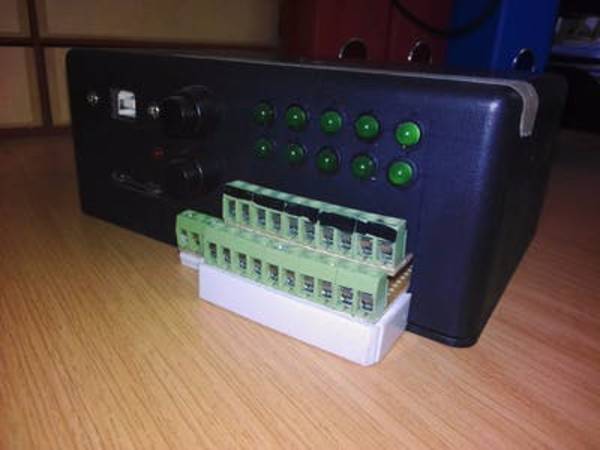
10 way Battery Condition Monitor
"This is a unit that can monitor 10 single cells or 10 battery packs and print data in graphs on excel. I was asked if i could come up with a way to measure and test multiple cells or battery packs for battery manufacturers to be able to test their batteries for research purposes, The unit that they had available could only do one battery at a time and it took 2 to 4 hours to complete the tests and a machine that could do more batteries cost around R 40 000 (South African Rand) So i set out to make life a bit easier and also realized that this unit is very useful for testing different types of batteries for my hobby R/C stuff so i can determine the best batteries to use for my 'toys' ? I made use of 10 INA219 current sensors to do my individual measurements, now if you look on the adafruit web site you will see they tell you that you can only add 4 of this units to one micro-controller's I2C line because of the addressing but its actual more like 20. If you read the INA219 IC Datasheet they explain how to change the Hex addresses just by moving and connecting different wires between GND, VCC, SCL and SDA, luckily i have made it easy for you and i uploaded the connections you have to make on the INA219 breakout board to make it easy for you. " [...]
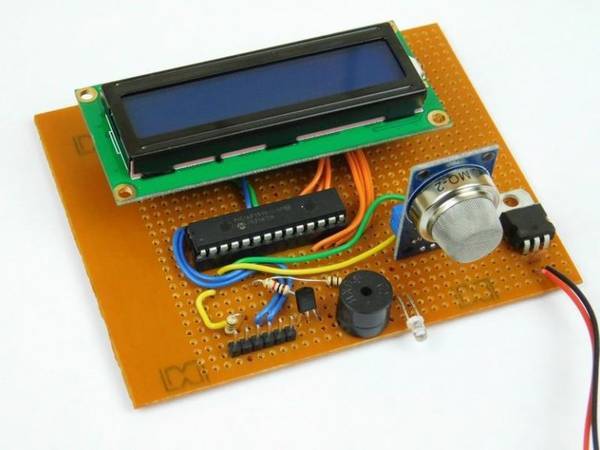
How to Make a PIC-Powered Gas Alarm
"Gases such as natural gas can be incredibly dangerous, and can even lead to death if not kept in check. In this DIY Hacking project, we will look at the MQ-2 Gas Sensor, understand how it works, and learn how to make a simple PIC alarm system that both displays the current detection levels and fires an alarm when a dangerous level of gas is detected. The two main components of this project are the MQ-2 sensor and the PIC16F1516. The MQ-2 gas sensor is capable of detecting multiple kinds of explosive gases, such as alcohol, and has high sensitivity to gases including LPG, propane, and hydrogen. At the heart of the sensor is SnO2 (tin oxide), which has a large resistance when in clean air. When the sensor comes into contact with an explosive gas, the sensor’s resistance decreases." [...]
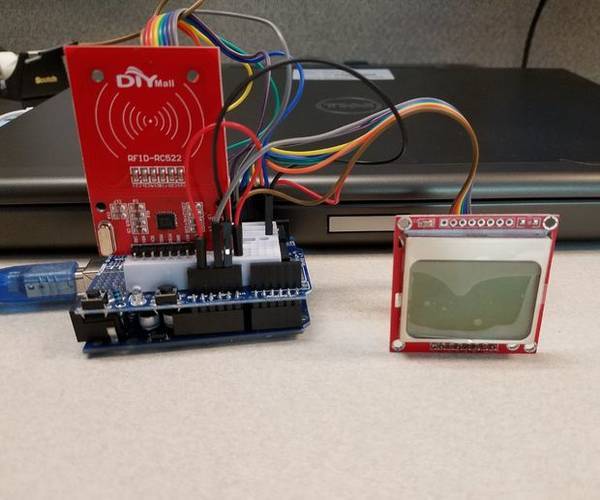
Yet Another Instructable on Using the DIYMall RFID-RC522 and Nokia LCD5110 With an Arduino
"Why did I feel the need to create another Instructable for the DIYMall RFID-RC522 and the Nokia LCD5110? Well, to tell you the truth I was working on a Proof of Concept sometime last year using both of these devices and somehow "misplaced" the code. Since the DIYMall RFID-RC522 doesn't have the pins labeled the same as some of the other RFID-RC522 board do, it was difficult to determine which pin was which. Besides, if I ever forget what I did in the POC I can now find it out on the web. " [...]

Responsive LED Backlight With Arduino and Python
"Working at night on the computer can be harsh on the eyes. When I worked late, the contrast between the monitor and the dark room strained my eyes. As a solution, I created this responsive monitor backlight: it aims to reduce contrast by illuminating the area behind the monitor, and responds to what is displayed on the screen. If the screen is dim, the backlight is dim, if the screen is primarily red, so is the backlight. This project is easy to make if you have basic knowledge of arduino and simple circuits. Some basic knowledge of python programming would help, but is not necessary." [...]
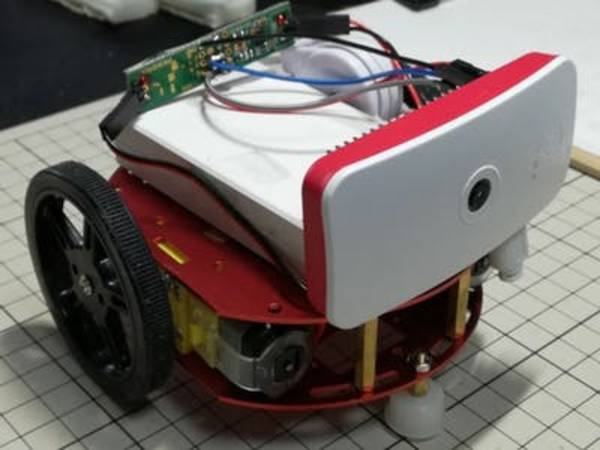
Raspberry Pi Zero W Car Controlled by Blynk
"I made remote control car. The motors are controlled by smartphone application Blynk and Raspberry Pi Zero W with the I2C input motor driver. I made remote control car. The motors are controlled by smartphone application Blynk and Raspberry Pi Zero W with the I2C input motor driver DRV8830. I2C input controls the motor supply voltage (speed) and supply voltage direction (direction of rotation). Two modules were used to control the left and right motors of the robot chassis kit." [...]

Sonic Bow Tie, by David B. Engen
"A compact bow tie, capable of continuously displaying the surrounding sound in four different frequencies on its two mirrored 4x5 LED arrays. This tutorial will go through how to make a bow tie that will make you stand out in any crowd. What you'll need for this project: 1 Arduino Pro Micro or a similarly sized Arduino that runs at 16MHz 40 3mm LEDs 1 simple button 1 Electret Microphone 1 Rechargeable 3.7V 800mAh 25C 1-Cell LiPo Battery 10 100 resistors 1 10k resistor 1 220 resistor Access to a PCB machine (Printed Circuit Board) A cheap adjustable hooked/clip-on bow tie or just the adjustable hooking/clip-on neckband" [...]

Certamen Quiz Practice Machine
"The Certamen quiz team competition from the Junior Classical League involves quiz questions on Greek/Roman subjects. Individual contestants press buzzer buttons when they have an answer. The machine keeps track of the order in which buttons were pressed, subject to the team-lockout rule that once a player on a team presses a button, the other presses from that team don't count. The machine we built was for three teams of four players each. Additionally, so that other school groups could use the machine as a standard quiz machine, there is an option to disregard teams and just keep track of button order. The school Certamen team needed a machine to practice on, but the official machine is $545 for the standalone system (a variant that plugs into a computer is $435), which was budgetarily infeasible." [...]
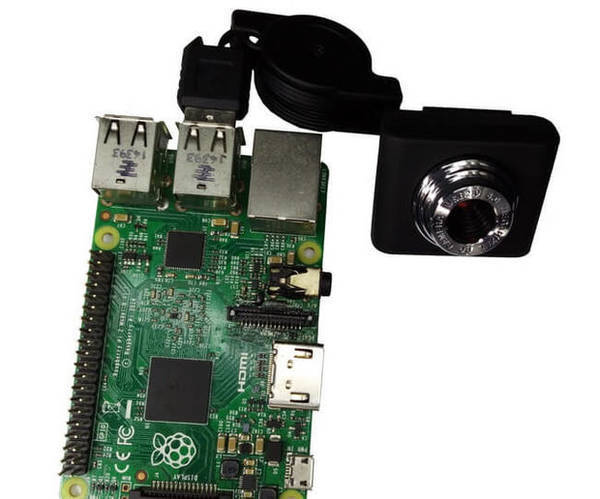
Smile Detection With Raspberry Pi Using Opencv and Python
"In this Project we are going to detect Face and Smile Detection using OpenCv with Raspberry Pi. In this Smile detection with raspberry pi using python project we are using OpenCv in Raspberry pi. This project is used to detects the human Face and smile with the help of OpenCv tool. In order to do object detection with cascade files, you first need cascade files for face and smile detection. For the extremely popular tasks, these file already exist. " [...]
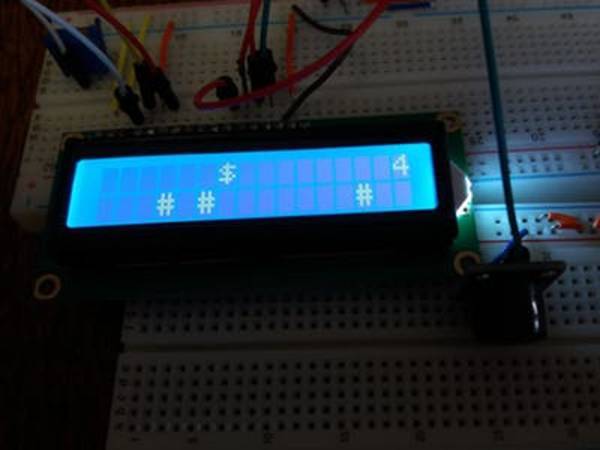
Ninja Dollar - LCD game
"A simple and fun LCD game. By anime. This is a simple LCD game. My inspiration was the Google Chrome's Dinosaur game but I added a few more changes to it. The dollar warrior moves constantly and he can jump to avoid the obstacles and collect the "star" points. If he jumps over the obstacle, he collects one point and if he catches the star, he collects five points." [...]
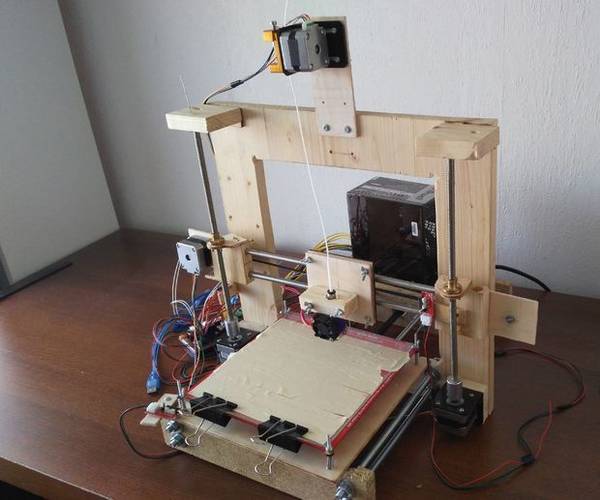
DIY 3D Printer: How to Make a 3D Printer That Anyone Can Do
"Hello everyone! Every time I start a new project, I try to make something bigger or more difficult than the previous one. So this time I made a 3D printer from some waste/residual wood, some "recycled" electronic parts and about 120$. In this instructable I will show you how I made it with only hand tools, I am an absolute beginner with 3D printing,so if I could make it, anyone could do it. My printer doesn't contain any printed or laser cut parts, that's why it costs only 120$. I hope you will enjoy this tutorial and make your own 3D printer:)" [...]
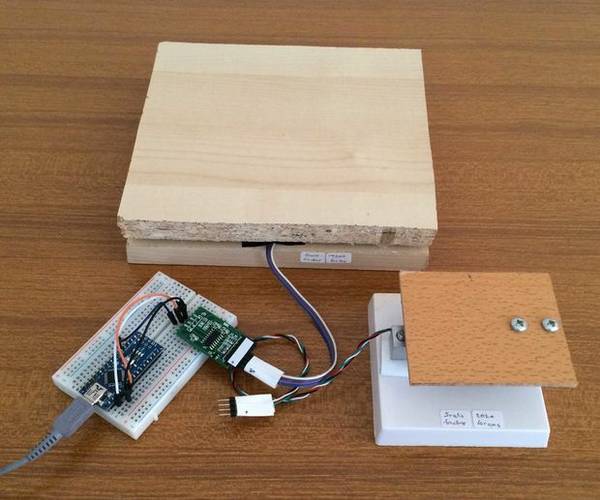
How to Build Arduino Weighing Scales
"At the Restart Project in London we hold repair events where members of the public are invited to bring in all manner of electrical and electronic items for repair, so as to save them from landfill. A few months ago (at an event I didn't actually attend) someone brought in some faulty kitchen weighing scales which nobody could fix. Never having seen inside any digital weighing scales and not knowing how they work, I took it as a challenge to research them, in the process, building two versions of my own. If you wish to build your own weighing scales or incorporate a weighing function in a wider project, you can use this Instructable as a basis, whatever your requirements, from weighing fractions of a gram up to many kilograms. Hence I will concentrate on the electronics, the software and the underlying principles. How you realise your own project is completely up to you." [...]

ASPIR: Full-Size 3D-Printed Humanoid Robot
"Autonomous Support and Positive Inspiration Robot (ASPIR) is a full-size, 4.3-ft open-source 3D-printed humanoid robot that anyone can build with enough drive and determination. This is a very advanced and large Instructables project! We recommend you have significant 3D-printing experience before attempting this project. Expected build time will be several months with an estimated build cost of roughly $2500 (this cost may be lower or higher depending on which suppliers you use and which parts you already have). Note that this Instructable only covers the hardware construction, and not the software (this is currently under development). With that being said, full speed ahead and good luck!" [...]
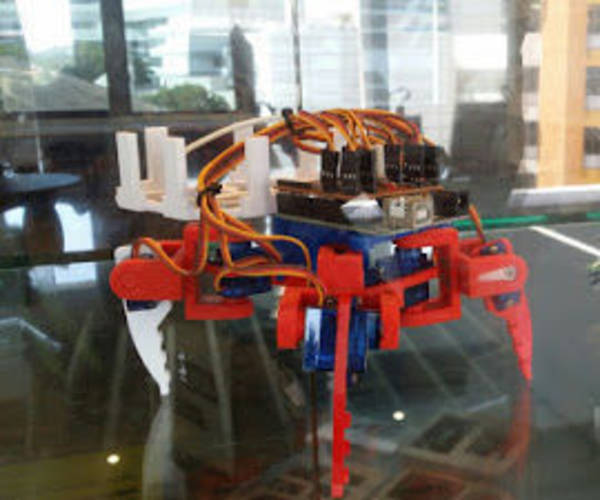
3D Printed Quadruped
"Project Supervisor : Teo Shin Jen This Instructable will show you how to build a quadruped robot from scratch using 3D printed parts and an Arduino UNO. I was only a year one computer engineering student at Singapore Polytechnic that time when I was doing this small project. Having no prior knowledge of electronics or circuits, I met with many obstacles along the way. Hopefully after reading through my post, you would be able to learn from my mistakes and finally start your own projects. Currently as of writing this, I am already year two. I should have documented it earlier." [...]
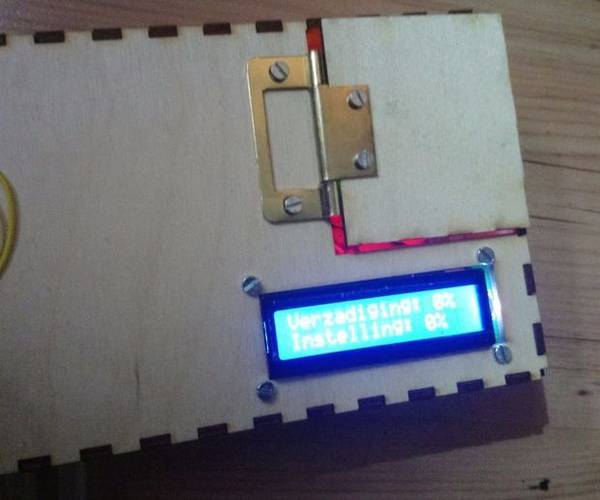
Plant Waterer
"Like me, always forgetting to water your plants and always end up with a pile of brown leaves? salvation is here! this device waters your plants once the soil gets too dry. " [...]
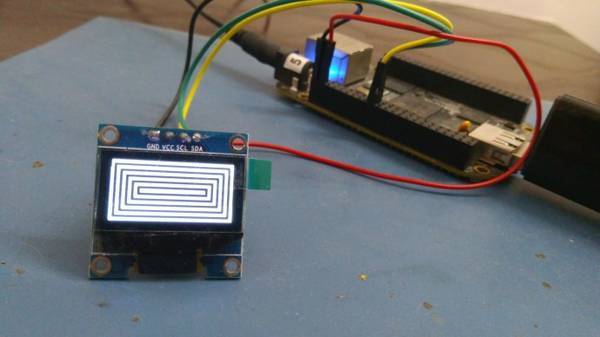
SSD1306 OLED Display Driver for BeagleBone
"Today, we can see a lot of products using the OLED display technology such as TV’s, cell phones etc. A very common example I can give you is the smartwatches and fitness bands. One such display is the SSD1306. The SSD1306 is small, consumes less power and has a crisp display. The SSD1306 along with the BeagleBone is a great option for those who are looking for a high processing capacity with a small and low-cost display. However, If one is looking to develop an HMI for industrial applications, then the Touch Screen Displays by 4D Systems is a great option." [...]
That's all Folks!


